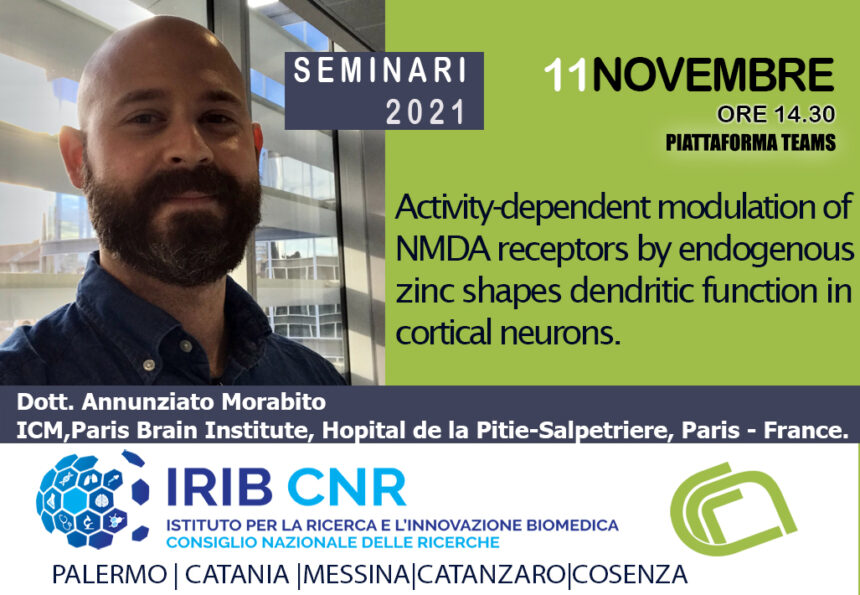
Dr. Annunziato Morabito
ICM,Paris Brain Institute, Hopital de la Pitie-Salpetriere, Paris, 75013, France.
Seminar: “Activity-dependent modulation of NMDA receptors by endogenous zinc shapes dendritic function in cortical neurons “.
11/11/2021
Abstract:
In order to fully decode the functional properties of neuronal networks that constitute the brain, it is essential to improve the knowledge about the input/output transformations performed by single neurons. Previous studies have shown that neuronal dendrites do not simply passively propagate signals from synapses to the soma but they can perform simple operations using a range of linear and nonlinear mechanisms, thus increasing computation capabilities of single neurons. In primary sensory cortex (S1), local dendritic electrogenesis has been proposed to be fundamental for the integration of sensory information. This phenomena is locally driven by the activation of active conductances, of which NMDA receptor (NMDAR) mediated seem to have a preponderant role. Zinc is a negative allosteric modulator of the NMDA receptors and has the intriguing property of being almost exclusively localized within synaptic vesicles in a subset of glutamatergic terminals and co-released with glutamate. In S1 cortex, we have now observed that activity-dependent release of vesicular zinc shapes dendritic computations and synaptic plasticity via modulation of synaptic NMDARs. Interestingly, this modulation is pathway specific being present selectively in L2/3-L2/3 connections but absent in ascending bottom-up inputs originating from L4 neurons in line with the absence of zinc positive nerve terminals in this brain area. Numerical simulations highlighted that activity-dependent modulation of NMDARs, via endogenous zinc release, has an important influence in dendritic computations. It endows L2/3 PN dendrites with the ability to sustain dendritic non-linear integrations relatively constant across different regimes of synaptic activity likes the ones described in vivo. Our study thus provides a new perspective on the actions of vesicular zinc in cortical circuits by normalizing dendritic integration of pyramidal neurons during a constantly changing synaptic input pattern.
INFO : seminari.irib@irib.cnr.it

